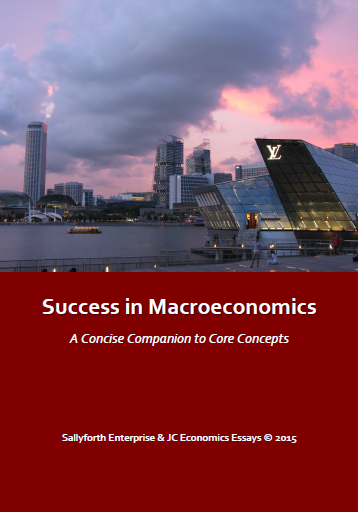Explain possible causes of stagflation in the USA.
Introduction - Possible Causes of Stagflation in the USA
Stagflation, as the name suggests, refers to the macroeconomic situation of low economic growth and high inflation – stagnation and inflation occurring at the same time. The background to this essay is that from 2008-2010 due to the housing bubble crisis in 2007/2008 in the USA, there have been massive rates of unemployment, raising the jobless rate.
This Economics essay argues that the possible causes of stagflation in the USA can be traced to mainly cost-push inflation.
Cost Push Inflation?
First, general cost push inflation could have resulted in stagflation in the United States. Inflation can be defined as a sustained increase in the general price level (GPL), and it could be a problem when the increase in the GPL is sustained, persistent, and inordinate.
Inflation can be both demand pull and cost push, the first affecting the aggregate demand (AD) which equals consumption, investment, government spending, and net exports or C + I + G + (X-M), by shifting it to the right, and the second affecting the aggregate supply (AS) curve, which is affected by the factors of production which are land, labour, capital, and enterprise.
For cost push, increases in unit input costs in the factors of production will lead to the AS shifting upwards, lowering employment, and simultaneously raising the rates of inflation. This can be explained using the AD/AS diagram demonstrating cost push inflation.
For example, first, higher costs of inputs such as oil could have contributed to this situation, because oil is fast running out, and the demand for oil is relatively inelastic, which could lead to high volatility and high prices. Second, wage costs could possibly have spiralled in the USA. Third, capital costs could have increased, but this is highly unlikely given that this is the USA with its technological advantages and its huge supply of capital.
Imported Inflation?
Imported inflation, which generally also leads to cost push inflation, but can also lead to demand pull inflation in some instances, might not have been a major influence of stagflation in the United States. This is because while the USA might accuse China of artificially having low exchange rates, thus increasing their imports of Chinese goods and probably causing some unemployment in sunset industries in the USA, the decreasing AD that results from this situation would actually ease inflation, and not cause stagflation.
Furthermore, the United States of America is a large country and does not depend on imported inputs that much for the production of her own products or exports. Possibly, the rise in global food and oil prices (commodity prices have been rising internationally) could lead to some imported inflation in the USA, which would have possibly also contributed to shifting the AS curve upwards, increasing GPL.
Quantitative Easing (QE)?
Second, excessive printing of money from the QE exercises (quantitative easing), from around 2008 to 2012, by the USA Federal Reserve (USA’s central bank) could have also led to stagflation in the USA because there could be the case of too much money chasing too few real goods. Also, it can be argued that according to the Fisher Equation, where MV = PT, increases in the money supply cause inflation to occur, corroborating Milton Friedman’s famous statement that “inflation is always and everywhere a monetary phenomenon”.
This might have contributed to the high inflation in the USA because low interest rates encourage borrowing for consumption and investment, which would have caused demand pull inflation to also occur; also, according to the classical direct transmissions mechanism, more money in the hands of consumers and firms would lead to higher C and I, thus boosting AD, which might have contributed to inflation. This could have led to AS shifting upwards due to asset bubbles, which raise the costs of production.
Conclusion
Hence, in conclusion, cost push inflation is likely to be the main cause of stagflation in the USA.
JC Economics Essays: Tutor's Comments - This Macroeconomics essay is about the causes of low economic growth and high unemployment in the USA, and is clearly in reference to recent events, in recent years (around 2007 - 2012). There are many good points about this Economics essay, such as its references to Milton Friedman and the many excellent, relevant, real world examples. However, put yourself into the shoes of an Economics tutor - what would you say were the weaknesses of this Economics paper, and how would you remedy them? Other than the fact that an Economics diagram could have been used (the AD/AS diagram which is already highlighted and put in bold fonts in the essay), what else could have been done better? While this Economics paper is good, how can it be made even better? Thanks for reading and cheers!



